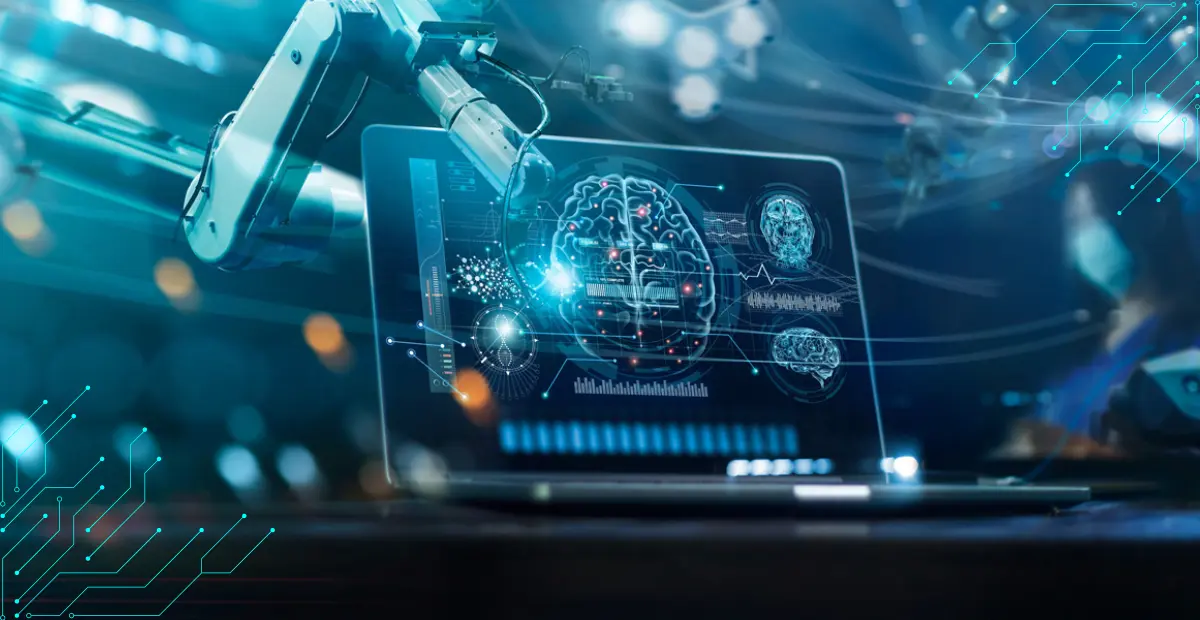“How will the integration of cutting-edge AI Technologies like Generative Adversarial Networks, Quantum Computin6g, and Explainable AI revolutionize scientific discovery in 2024 and beyond?”
Artificial Intelligence is not just a buzzword, it’s a powerful tool transforming various sectors, and scientific research is no exception. The integration of AI in scientific discovery is enabling researchers is no exception.
The Integration of AI in scientific discovery is enabling researchers to analyze data faster, predict outcomes more accurately, and uncover insights that were previously unimaginable. As we step into 2024. Let’s explore the top 10 emerging AI Technologies poised to revolutionize scientific discovery.

Top 10 AI Technologies:
- Generative Adversarial Network( GANs)
- Quantum Computing with AI integration
- Explainable AI (XAI)
- AI-Driven Predictive Analytics
- Natural Language Processing (NLP) for Research
- AI in imaging and Diagnostics
- AI-Powered Robotics
- Reinforcement Learning
- AI for Environmental Science
- AI in personalized medicine
The scientific landscape is undergoing a revolution driven by artificial intelligence (AI). No longer confined to science fiction, AI Technologies is rapidly becoming a powerful tool for researchers, accelerating discovery and pushing the boundaries of human knowledge. The World Economic Forum (WEF) recently identified AI for scientific discovery as one of the Top 10 Emerging Technologies of 2024. Let’s delve into this exciting realm and explore ten key areas where AI is transforming scientific research
1. Generative Adversarial Networks (GANs)
GANs are reshaping scientific research by creating realistic data and simulating complex systems. In drug discovery, GANs generate new molecular structures, accelerating the development of new medications. They’re also valuable in climate modeling and producing realistic astronomical data.
2. Quantum Computing with AI Integration
Quantum computing combined with AI is solving problems beyond the capabilities of classical computers. This powerful duo enhances simulations of molecular structures and chemical reactions, leading to materials science and pharmacology breakthroughs. Companies like IBM and Google are at the forefront of this technology, with quantum computers already optimizing complex algorithms for scientific research.
3. Explainable AI (XAI)
Explainable AI addresses the “black box” problem, making AI’s decision-making process transparent. This transparency is crucial in fields like healthcare, where understanding how an AI system reaches a diagnosis builds trust and supports better clinical decisions.
4. AI-Driven Predictive Analytics
Predictive analytics powered by AI is transforming genomics and epidemiology. AI predicts disease outbreaks, understands genetic disorders, and identifies health risks through data analysis. In genomics, AI algorithms analyze vast genetic data to predict gene interactions and their contributions to diseases.
Also, review the “@hogrowth‘s” latest post on Twitter:
India is ranked 10th with private investment in AI amounting to $1.4 billion, while the US leads the Top 10 list.
China follows at a distant second with investments nearly reaching $8 billion, and the UK trails behind at almost $4 billion in investments.
The global technology…
— HoGrowth (@hogrowth) July 2, 2024
5. Natural Language Processing (NLP) for Research
NLP enables scientists to extract insights from extensive text data, including research papers, clinical notes, and patents. Tools like Google’s BERT and OpenAI’s GPT models analyze and summarize scientific literature, helping researchers stay updated with the latest findings and identify relevant studies.
6. AI in Imaging and Diagnostics
AI is revolutionizing imaging techniques in radiology, pathology, and astronomy. AI algorithms analyze medical images to detect diseases early with higher accuracy than traditional methods. In astronomy, AI processes telescope images to identify celestial bodies and phenomena previously missed.
7. AI-Powered Robotics
AI-driven robots automate repetitive tasks, conduct experiments, and assist in surgeries in laboratories. These robots ensure precision and efficiency. In chemistry, AI-powered robots synthesize new compounds and materials, accelerating discovery.
8. Reinforcement Learning
Reinforcement learning, where agents learn by interacting with their environment, optimizes complex systems in physics and engineering. These algorithms design more efficient systems and processes, from optimizing energy grids to developing new materials.

9. AI for Environmental Science
AI plays a crucial role in environmental monitoring and conservation. Machine learning algorithms analyze satellite imagery to track deforestation, monitor wildlife populations, and predict natural disasters. AI models also optimize renewable energy use and reduce carbon footprints.
10. AI in Personalized Medicine
AI is at the forefront of personalized medicine, tailoring treatments to individual patients based on their genetic makeup and health data. AI algorithms predict patient treatment responses, identify potential side effects, and suggest personalized therapeutic strategies, transforming oncology and improving patient outcomes.
Emphasize the Future Potential
The future of scientific discovery is inextricably linked with AI. As this technology evolves, we can expect even more groundbreaking discoveries across various scientific disciplines. However, it’s crucial to ensure AI’s responsible development and implementation in science to maximize its benefits for humanity.



